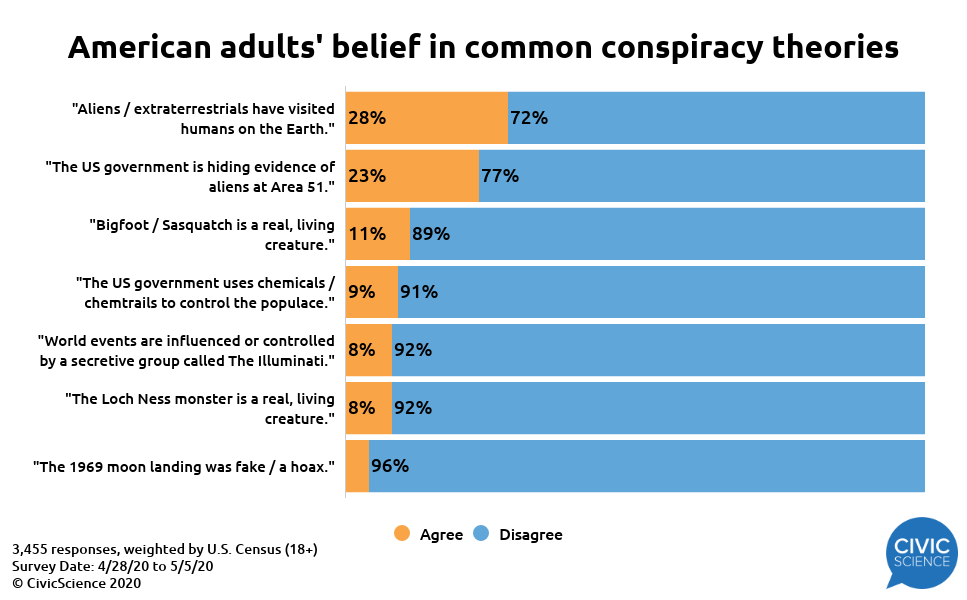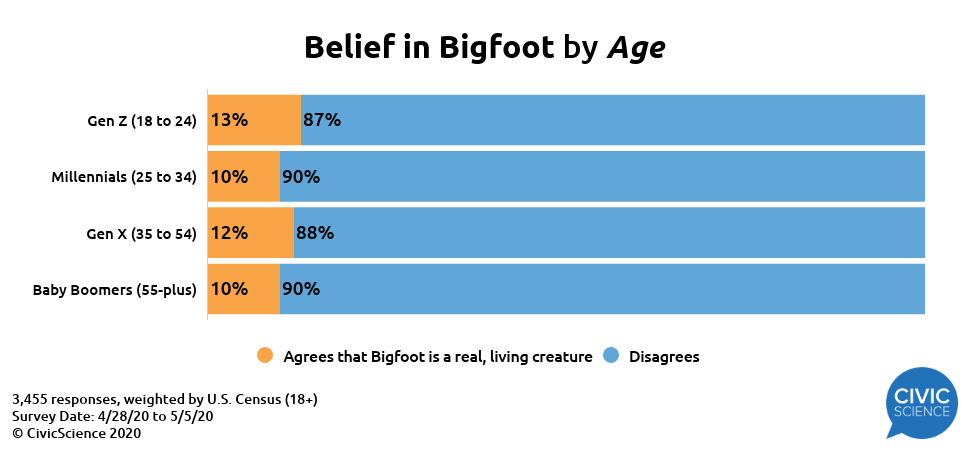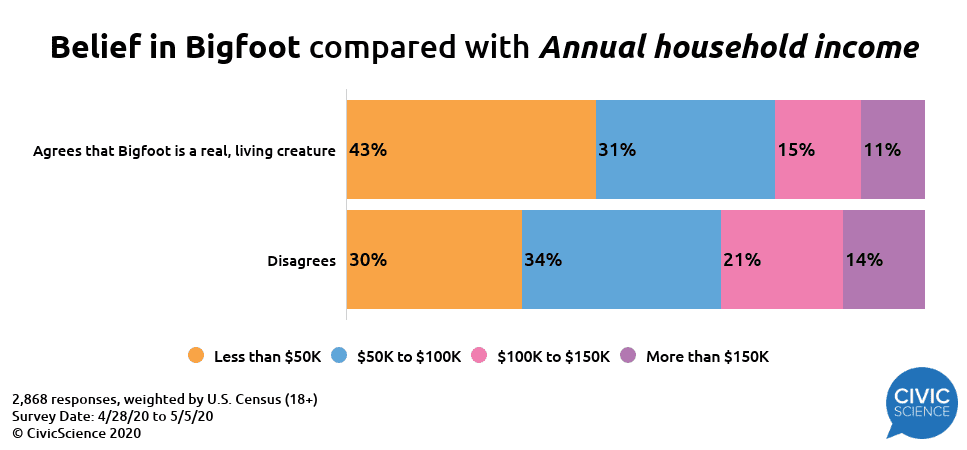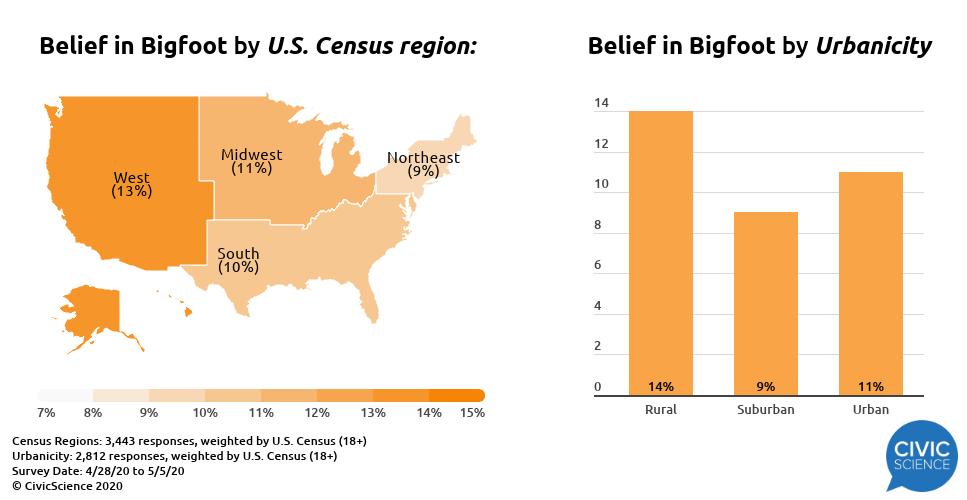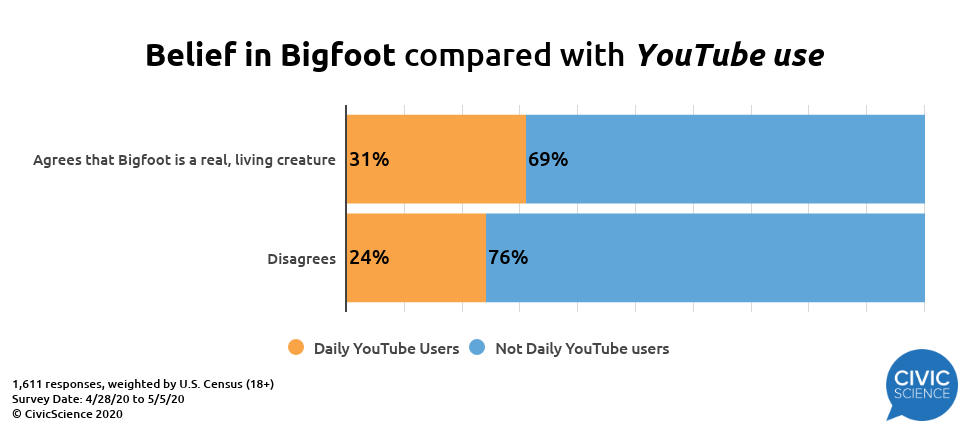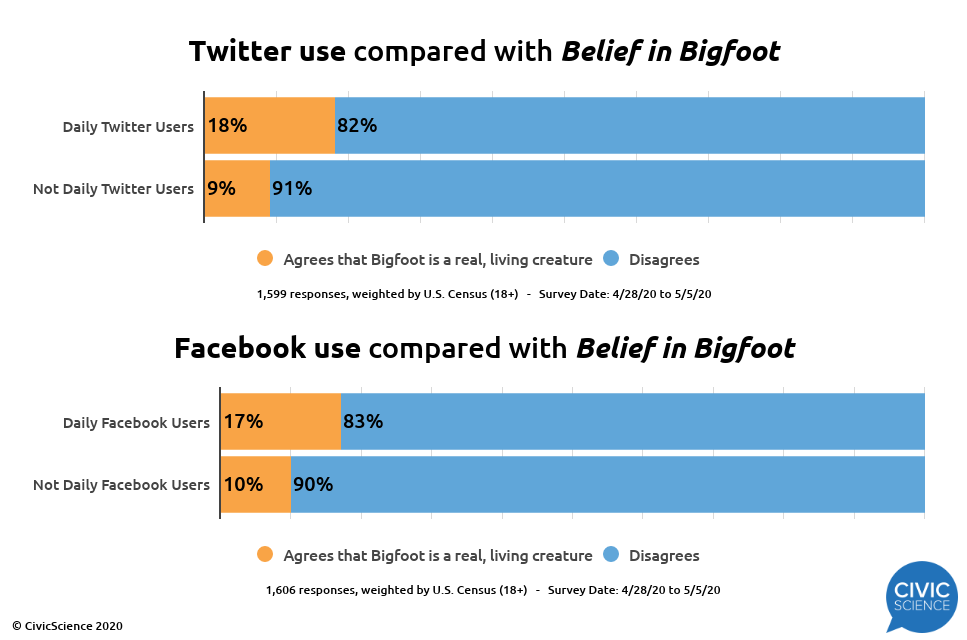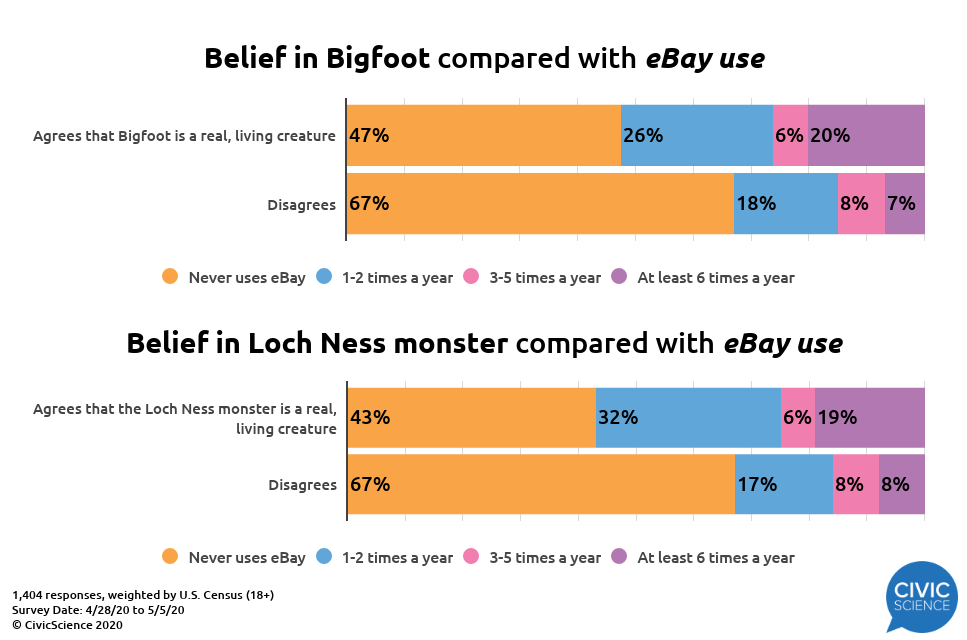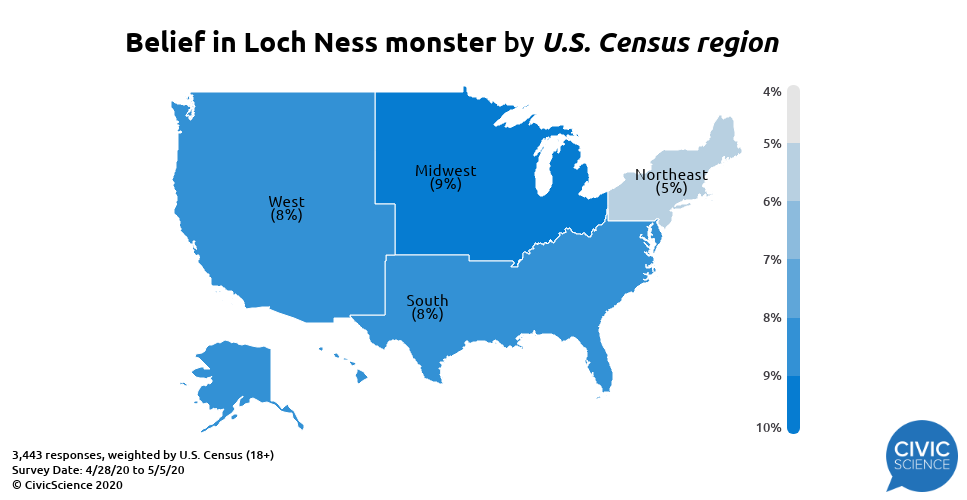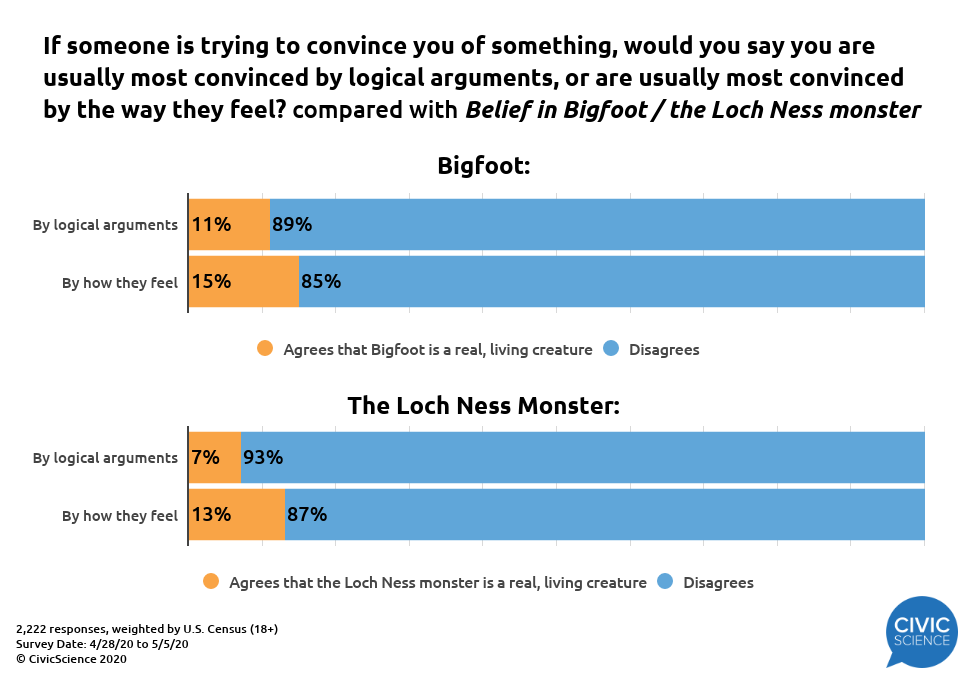Editor’s Note: This is Part 2 of 2 in a CivicScience series on Americans’ belief in common counterculture narratives, or conspiracy theories. You can find the first installment, focusing on alien conspiracy theories, here.
Last week, CivicScience published data showing that 41% of U.S. adults ascribe to at least one of seven common conspiracy theories.
While last week’s post focused on those who believe in alien visitation to the Earth (the most popular theory), this week we’ll be taking a closer look at believers in theories about mythical creatures.
Excluding alien theories, belief in Bigfoot / Sasquatch was the most common ‘conspiracy theory’ among the 3,445 American adults surveyed by CivicScience:
This week, we’ll take a look at Bigfoot and Loch Ness monster believers. We’ll leave the somewhat darker world of government-related conspiracy theories alone for now.
Sasquatch Leaves a Big Footprint in the Western U.S.
More than 1 in 10 American adults believes that Bigfoot is a real, living creature.
Men and women are roughly equally likely to believe in Sasquatch. And whereas belief in alien theories peaked among Gen X, there was a strong cohort of Gen Z that expressed belief in Bigfoot. Millennials and Baby Boomers were slightly more skeptical.
Where variations in income were fairly minimal when it came to alien theory believers and skeptics, differences were more pronounced between Bigfoot believers and non-believers.
Given the high number of alleged Bigfoot sightings in West Coast states, it may come as no surprise that belief in Bigfoot is strongest in the western U.S., and in rural areas in general.
Given the amount of conspiracy theory videos posted on the platform, it may also be unsurprising that Bigfoot believers are more likely to be daily YouTube users than non-believers.
It may be that belief in Bigfoot is amplified disproportionately on the country’s most popular social media channels: Daily Twitter users and daily Facebook users are much more likely than others to be on the lookout for Sasquatch. Daily users of Instagram and TikTok are no more or less likely than others to believe, though.
Nessie Makes a Splash in the Midwest
Meanwhile, about 1 in every 13 U.S. adults believes that the Loch Ness monster is a real, living creature.
Similarly to belief in Bigfoot, belief in the Loch Ness monster also skewed rural and lower-income. In fact, although belief in Nessie is slightly less common, there’s a lot of crossover between Nessie believers and Bigfoot believers. Half of the American adults who believe in Bigfoot also believe in Nessie; three-quarters of those who believe in Nessie also believe in Sasquatch.
For instance, both groups are really into the eBay economy.
Nessie vs. Bigfoot
There were some differences, though. For example, it seems that Bigfoot believers are more gung-ho about going back to normal daily life post-coronavirus than Nessie believers are.
And while Bigfoot is a phenomenon in the American West, Nessie’s popularity peaks in the Midwest states. Midwesterners were nearly twice as likely as Northeasterners to believe in the Loch Ness monster. (It would seem that one’s proximity to Scotland has little to do with this belief.)
The two groups also have wildly different opinions about two brands generally seen as staples of rural America: Wrangler and Cabela’s.
It turns out that one’s preferred cable news channel has a big effect on their likelihood of believing in Sasquatch and Nessie.
While Bigfoot and the Loch Ness monster are certainly just campfire stories for the vast majority of U.S. adults, there is a small contingent of Americans that express belief in these mythical creatures. These believers tend to live in rural areas (though not exclusively), and they’re also very active on social media and YouTube.
We’ll leave you with a chart that may help explain the mindset of Americans who believe in conspiracy theories / counterculture narratives / whatever you want to call Sasquatch and Nessie: The relatively small portion of American adults (11%) who say they are convinced less by logical arguments and more by the way someone feels about something were more likely to believe in Bigfoot and Nessie than others.
